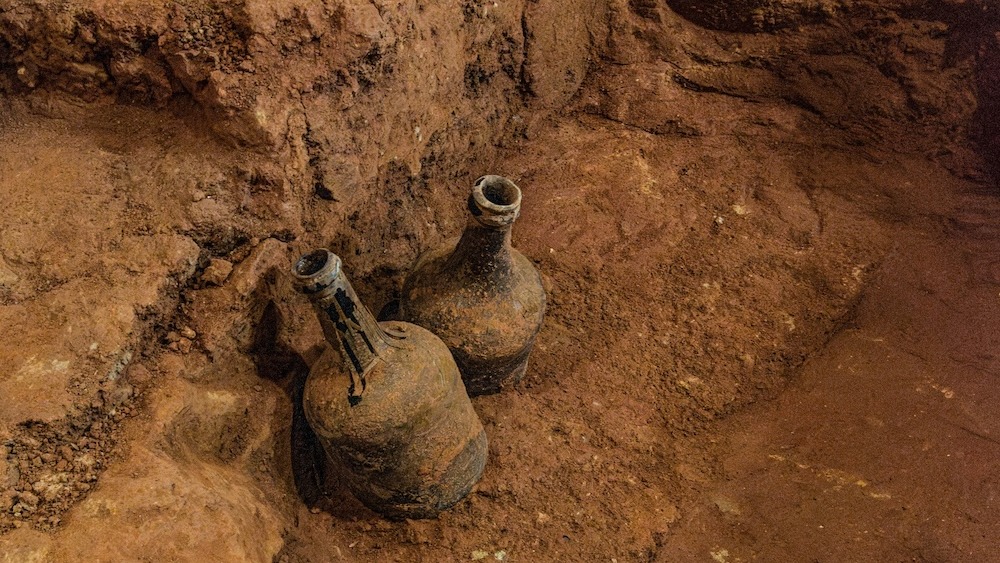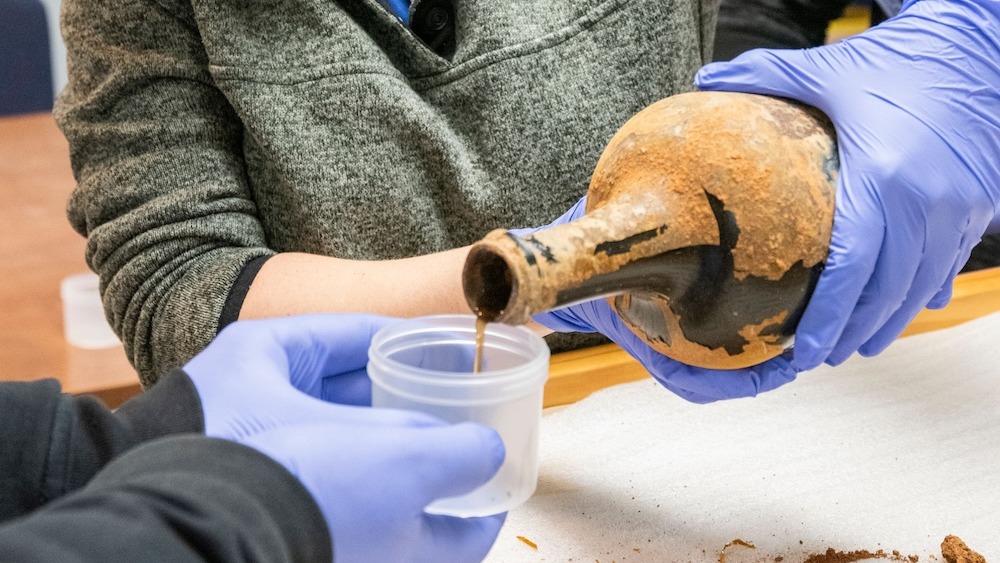George Washington's stash of centuries-old cherries found hidden under Mount Vernon floor
Enslaved people picked the cherries around 250 years ago, likely in pre-Revolutionary War times.

Two glass bottles filled with centuries-old cherries were found hidden inside George Washington's historic home in Virginia.
Archaeologists made the discovery while conducting ongoing excavations as part of a major revitalization of the mansion, known as Mount Vernon. The bottles, which look like they were made in the 1740s to 1750s, were found buried beneath a brick floor that was laid in the 1770s, according to a Mount Vernon statement.
To help preserve the roughly 250-year-old glass bottles, researchers decanted their contents — including cherries, pits, stems and a "gooey residue" — into smaller vessels for future analysis, The Washington Post reported.
"There are whole, recognizable cherries," Jason Boroughs, Mount Vernon's principal archaeologist, told The Washington Post. "It actually smelled like cherry blossoms when we got to the bottom."
Researchers think that much of the amber-colored liquid could be groundwater that seeped into the bottles as their corks deteriorated over time and that the cherries were likely harvested at Mount Vernon in the 1770s, possibly before the Revolutionary War, and squirreled away for future consumption. The bottles themselves were buried sometime between 1758 and 1776, The Washington Post reported.
Related: What were George Washington's teeth made of? (It's not wood)
"So it's a time capsule," Boroughs said.
Sign up for the Live Science daily newsletter now
Get the world’s most fascinating discoveries delivered straight to your inbox.
During colonial times, there was a popular drink known as cherry bounce, which was made with brandy, spices, sugar and cherry juice. (Both Washington and his wife, Martha, were fans.) However, typically, this tipple was stored in larger vessels, so archaeologists concluded that it's likely that the newly discovered fruits were being preserved for other uses, such as for cooking or baking, The Washington Post reported.
"There are 18th century accounts that talk about proper ways of preserving fruits and vegetables," Boroughs said. "One of the most common, especially for berries, is to dry them as much as possible … put them in a dry bottle, cork it … and then bury them."

It's worth noting that the cherries weren't picked by Washington himself but rather by some of the hundreds of enslaved people living at Mount Vernon at the time, The Washington Post reported. Moreover, the famous tale of a young Washington damaging a cherry tree with a hatchet and later confessing to it because "I cannot tell a lie," is a myth concocted by a biographer, according to George Washington's Mount Vernon.
This isn't the first time similar vessels containing aging cherries and other fruits have been found in Virginia. In 1966, bottles were unearthed in Williamsburg, and in 1981, some were found at Monticello, Thomas Jefferson's estate.
Jennifer Nalewicki is former Live Science staff writer and Salt Lake City-based journalist whose work has been featured in The New York Times, Smithsonian Magazine, Scientific American, Popular Mechanics and more. She covers several science topics from planet Earth to paleontology and archaeology to health and culture. Prior to freelancing, Jennifer held an Editor role at Time Inc. Jennifer has a bachelor's degree in Journalism from The University of Texas at Austin.









